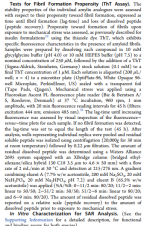I've seen topics and posts going both ways on this.
It seems like PH needs to be under around 4-4.5 exactly to be considered safe for this.
However, a lot of people don't seem to think it's a risk either way and this is overblown etc.
Would love to know your thoughts on this.
I have some I got for free I'm considering stacking with my current tirz dose, but still researching.
It seems like PH needs to be under around 4-4.5 exactly to be considered safe for this.
However, a lot of people don't seem to think it's a risk either way and this is overblown etc.
Would love to know your thoughts on this.
I have some I got for free I'm considering stacking with my current tirz dose, but still researching.

